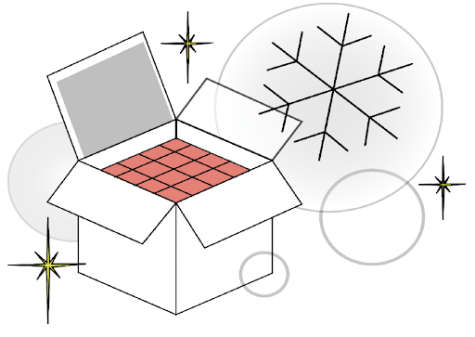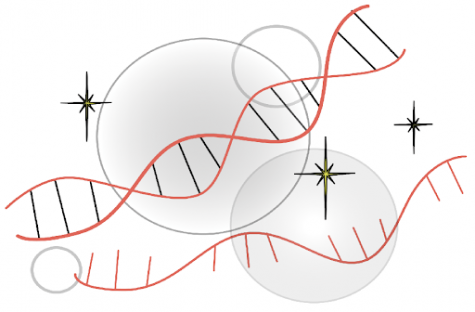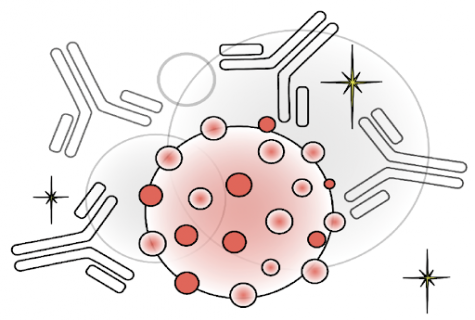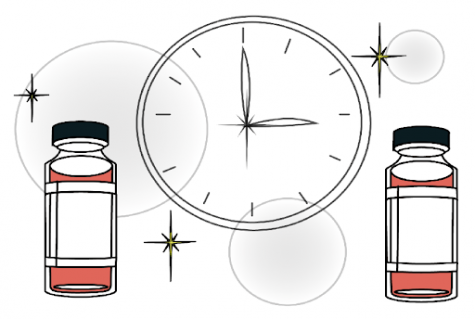How the Pfizer vaccine works: A breakdown
January 6, 2021
After Pfizer and BioNTech received an Emergency Use Authorization (EUA) from the Food and Drug Administration (FDA) for their COVID-19 vaccine on Dec. 11, vaccinations have begun in all 50 states. Front-line workers and the elderly have been prioritized to receive the vaccine first.
In California, seven locations received the first shipments of the Pfizer vaccine, including the University of California, San Francisco (UCSF) and Zuckerberg San Francisco General. As of Jan. 6, 486,087 people in California have received their first dose of either the Pfizer or Moderna vaccine.
Part 1: Storage
Pfizer’s vaccine is transported in thermal shippers which use dry ice to maintain an internal temperature of -70˚C, providing storage for up to 30 days. The vaccine is then transferred to refrigerators at 2-8°C for up to five days and must be diluted in a saline solution before being used within six hours.

Part 2: Efficacy
The vaccine’s high effectiveness comes from its use of messenger RNA (mRNA), which sends instructions to human cells for the production of spike proteins. These proteins, found on the surface of the virus, stimulate the immune system to produce antibodies and prepare it for a severe infection.

Part 3: Response
If infected, the body’s antibodies bind to the viruses’ surface, engulfing it and preventing its spike proteins from attaching to human cells. Immune cells can then find and destroy any potentially infected cells, which contain spike proteins on their surface.

Part 4: Dosage
In order to achieve its full efficacy, the vaccine must be administered in two doses, three weeks apart. The company expects to produce 50 million doses by the end of the year, and according to the Centers for Disease Control and Prevention, as of Jan. 6, over 5.3 million people in the U.S. have received the first dose of the vaccine.



















![“[Building nerf blasters] became this outlet of creativity for me that hasn't been matched by anything else. The process [of] making a build complete to your desire is such a painstakingly difficult process, but I've had to learn from [the skills needed from] soldering to proper painting. There's so many different options for everything, if you think about it, it exists. The best part is [that] if it doesn't exist, you can build it yourself," Ishaan Parate said.](https://harkeraquila.com/wp-content/uploads/2022/08/DSC_8149-900x604.jpg)




![“When I came into high school, I was ready to be a follower. But DECA was a game changer for me. It helped me overcome my fear of public speaking, and it's played such a major role in who I've become today. To be able to successfully lead a chapter of 150 students, an officer team and be one of the upperclassmen I once really admired is something I'm [really] proud of,” Anvitha Tummala ('21) said.](https://harkeraquila.com/wp-content/uploads/2021/07/Screen-Shot-2021-07-25-at-9.50.05-AM-900x594.png)







![“I think getting up in the morning and having a sense of purpose [is exciting]. I think without a certain amount of drive, life is kind of obsolete and mundane, and I think having that every single day is what makes each day unique and kind of makes life exciting,” Neymika Jain (12) said.](https://harkeraquila.com/wp-content/uploads/2017/06/Screen-Shot-2017-06-03-at-4.54.16-PM.png)








![“My slogan is ‘slow feet, don’t eat, and I’m hungry.’ You need to run fast to get where you are–you aren't going to get those championships if you aren't fast,” Angel Cervantes (12) said. “I want to do well in school on my tests and in track and win championships for my team. I live by that, [and] I can do that anywhere: in the classroom or on the field.”](https://harkeraquila.com/wp-content/uploads/2018/06/DSC5146-900x601.jpg)
![“[Volleyball has] taught me how to fall correctly, and another thing it taught is that you don’t have to be the best at something to be good at it. If you just hit the ball in a smart way, then it still scores points and you’re good at it. You could be a background player and still make a much bigger impact on the team than you would think,” Anya Gert (’20) said.](https://harkeraquila.com/wp-content/uploads/2020/06/AnnaGert_JinTuan_HoHPhotoEdited-600x900.jpeg)

![“I'm not nearly there yet, but [my confidence has] definitely been getting better since I was pretty shy and timid coming into Harker my freshman year. I know that there's a lot of people that are really confident in what they do, and I really admire them. Everyone's so driven and that has really pushed me to kind of try to find my own place in high school and be more confident,” Alyssa Huang (’20) said.](https://harkeraquila.com/wp-content/uploads/2020/06/AlyssaHuang_EmilyChen_HoHPhoto-900x749.jpeg)








